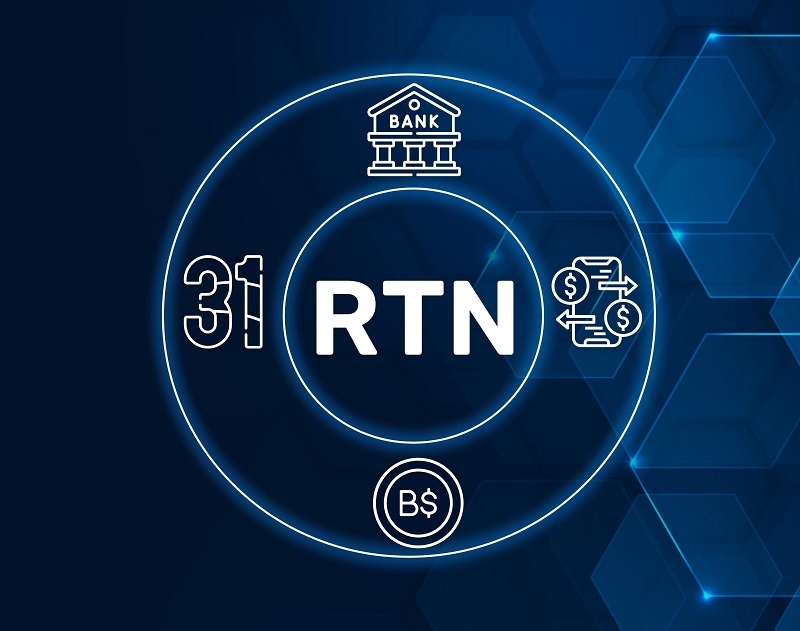
When you open a financial institution account or set up payments, one question always pops up: what's a financial institution routing number, and why do you want it? This random nine-digit variety plays a chief function in shifting money securely and accurately.
Whether you're setting up direct deposit data, creating a wire transfer, or seeking to understand the difference between routing vs account number, knowing your routing range is important to coping with your price range. In this complete manual, we’ll explain how to locate routing number statistics, speak wire transfer basics, and display how a lot of these numbers join.
Let’s demystify the numbers at the bottom of your test.
A financial institution routing number, additionally called an ABA routing number, is a unique 9-digit code used to become aware of a particular financial institution within the United States. Think of it as a banking address—similar to your home address guarantees your mail reaches the proper region, your routing number ensures your cash reaches the right financial institution.
Every U.S. Financial institution or credit union has one or more routing numbers assigned based on geography and function (e.g., paper tests, ACH transfers, wire transfers).
If you’re wondering what a financial institution routing quantity is, just recognize: it’s essential to almost every virtual and physical transaction.
If you’re seeking out the way to discover routing wide range of information, you have multiple alternatives. Routing numbers are not secret—they’re extensively to be had and frequently printed for your checks or displayed to your financial institution’s online portal.
Here's a way to locate routing range information easily:
If you have a paper check:
This layout is standardized through the American Bankers Association.
Most banks list routing numbers beneath:
Make sure you select the proper routing variety for the transaction you’re performing (ACH vs card switch).
When doubtful, calling your bank’s customer service or visiting a branch guarantees you get the correct information.
Type “[Your Bank Name] routing wide variety” in a search engine; however, confirm the data comes from a reputable website or a trusted financial institution.
The Federal Reserve gives a routing range research provider to verify routing numbers used in financial transactions.
Knowing the way to find routing wide variety information facilitates making certain your deposits, withdrawals, and payments go through easily.
A commonplace source of misunderstanding is understanding the difference between routing vs account number. Both are important, but they serve different functions.
When you’re making a transaction, both numbers are commonly required. Think of the routing quantity as the metropolis, and your account number as the specific domestic address.
If you blend up routing vs account variety, your finances won't reach their destination—or worse, end up in the wrong account.
When sending cash electronically, especially across banks or nations, wire transfers are regularly used. Understanding wire transfer basics lets you keep away from mistakes or costs.
A twine transfer is a digital manner to send funds between banks or institutions, either locally or the world over. Unlike ACH transfers (which might be processed in batches), wire transfers are frequently processed in real-time or same day.
Routing numbers for wire transfers can also range from routing numbers used for ACH or direct deposits. Always verify with your bank which one to use.
Wire transfers are usually greater highly-priced than ACH but are favored for instant, high-fee transactions.
Understanding cord transfer fundamentals and the usage of an appropriate routing variety ensures your transaction receives where it desired destination without steep delays.

Direct deposit is one of the maximum commonplace use of for a routing variety nowadays. When putting in direct deposit information, you will want both your routing and account numbers to make sure your paycheck lands immediately into your bank account.
Some banks additionally assist you to percentage a digital direct deposit form, prefilled with accurate information, via their cell apps.
Mistakes in putting in direct deposit information, like wrong routing or account numbers, can delay paychecks or bring about price range being sent to the wrong individual.
No. Routing numbers are public and used to identify banks. Your account variety is non-public, but routing numbers are usually printed on checks and shared freely.
Yes. Banks can merge or restructure, resulting in routing numbers to change. Always double-take a look at it in case you’re the use of an older checkbook or switching banks.
Yes. Large banks regularly have specific routing numbers via kingdom, area, or feature (e.g., ACH vs wire).
The transaction may also:
To keep away from this, continually confirm a way to find routing variety details effectively.
Now that you recognize routing vs account number roles, follow those protection recommendations:
In today’s world of digital banking, direct deposits, and online invoice pay, knowing what a financial institution routing number is and the way to use it is far extra vital than ever. This easy 9-digit wide variety guarantees your cash goes to the proper vicinity—whether or not you’re putting in direct deposit data, making transfers, or information routing vs account number variations.
With a better drawing close of twine transfer basics and the way to correctly share your information, you’re now extra ready to manage your money with self-belief.
If you’ve ever puzzled about the way to find routing quantity info, now you already know: it’s proper at your fingertips—and extra crucial than you thought.
This content was created by AI